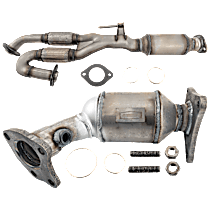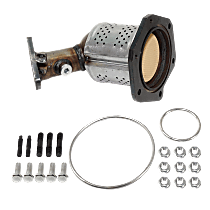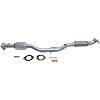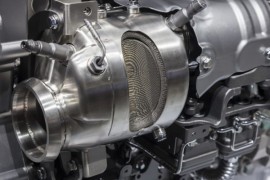{
"lazyNodes": false,
"abFitnotesFlag": false,
"abCrawlReviews": false,
"productOptionsCookie": false,
"orderDelayFlag": false,
"skipSessionCookie": false,
"covidMessage": false,
"fullTitleCookie": false,
"nrLoggerCookie": false,
"checkoutReviewCookie": false,
"productOptionSeqCookie": false,
"maintenanceFlag": false,
"bufferETACookie": false,
"multiShippingDiscountFlag": false,
"newFitmentFlag": false,
"surveyOptInFlag": false,
"crossSellFlag": false,
"skuMappingFlag": false,
"paySplitCookie": false,
"callDisableFlag": false,
"zipPaymentFlag": "u",
"hassleFreeReturn": false,
"lifetimeReplacement": false,
"cpn_off": false
}Nissan Altima Catalytic Converters
Shop Catalog
![]() WARNING: This product can expose you to chemical which is known to the State of California to cause cancer and birth defects or other reproductive harm. For more information go to www.P65Warnings.ca.gov.
WARNING: This product can expose you to chemical which is known to the State of California to cause cancer and birth defects or other reproductive harm. For more information go to www.P65Warnings.ca.gov.
![]() WARNING: This product can expose you to chemical which is known to the State of California to cause cancer and birth defects or other reproductive harm. For more information go to www.P65Warnings.ca.gov.
WARNING: This product can expose you to chemical which is known to the State of California to cause cancer and birth defects or other reproductive harm. For more information go to www.P65Warnings.ca.gov.
![]() WARNING: This product can expose you to chemical which is known to the State of California to cause cancer and birth defects or other reproductive harm. For more information go to www.P65Warnings.ca.gov.
WARNING: This product can expose you to chemical which is known to the State of California to cause cancer and birth defects or other reproductive harm. For more information go to www.P65Warnings.ca.gov.
![]() WARNING: This product can expose you to chemical which is known to the State of California to cause cancer and birth defects or other reproductive harm. For more information go to www.P65Warnings.ca.gov.
WARNING: This product can expose you to chemical which is known to the State of California to cause cancer and birth defects or other reproductive harm. For more information go to www.P65Warnings.ca.gov.
![]() WARNING: This product can expose you to chemical which is known to the State of California to cause cancer and birth defects or other reproductive harm. For more information go to www.P65Warnings.ca.gov.
WARNING: This product can expose you to chemical which is known to the State of California to cause cancer and birth defects or other reproductive harm. For more information go to www.P65Warnings.ca.gov.
![]() WARNING: This product can expose you to chemical which is known to the State of California to cause cancer and birth defects or other reproductive harm. For more information go to www.P65Warnings.ca.gov.
WARNING: This product can expose you to chemical which is known to the State of California to cause cancer and birth defects or other reproductive harm. For more information go to www.P65Warnings.ca.gov.
![]() WARNING: This product can expose you to chemical which is known to the State of California to cause cancer and birth defects or other reproductive harm. For more information go to www.P65Warnings.ca.gov.
WARNING: This product can expose you to chemical which is known to the State of California to cause cancer and birth defects or other reproductive harm. For more information go to www.P65Warnings.ca.gov.
![]() WARNING: This product can expose you to chemical which is known to the State of California to cause cancer and birth defects or other reproductive harm. For more information go to www.P65Warnings.ca.gov.
WARNING: This product can expose you to chemical which is known to the State of California to cause cancer and birth defects or other reproductive harm. For more information go to www.P65Warnings.ca.gov.
![]() WARNING: This product can expose you to chemical which is known to the State of California to cause cancer and birth defects or other reproductive harm. For more information go to www.P65Warnings.ca.gov.
WARNING: This product can expose you to chemical which is known to the State of California to cause cancer and birth defects or other reproductive harm. For more information go to www.P65Warnings.ca.gov.
![]() WARNING: This product can expose you to chemical which is known to the State of California to cause cancer and birth defects or other reproductive harm. For more information go to www.P65Warnings.ca.gov.
WARNING: This product can expose you to chemical which is known to the State of California to cause cancer and birth defects or other reproductive harm. For more information go to www.P65Warnings.ca.gov.
![]() WARNING: This product can expose you to chemical which is known to the State of California to cause cancer and birth defects or other reproductive harm. For more information go to www.P65Warnings.ca.gov.
WARNING: This product can expose you to chemical which is known to the State of California to cause cancer and birth defects or other reproductive harm. For more information go to www.P65Warnings.ca.gov.
![]() WARNING: This product can expose you to chemical which is known to the State of California to cause cancer and birth defects or other reproductive harm. For more information go to www.P65Warnings.ca.gov.
WARNING: This product can expose you to chemical which is known to the State of California to cause cancer and birth defects or other reproductive harm. For more information go to www.P65Warnings.ca.gov.
![]() WARNING: This product can expose you to chemical which is known to the State of California to cause cancer and birth defects or other reproductive harm. For more information go to www.P65Warnings.ca.gov.
WARNING: This product can expose you to chemical which is known to the State of California to cause cancer and birth defects or other reproductive harm. For more information go to www.P65Warnings.ca.gov.
![]() WARNING: This product can expose you to chemical which is known to the State of California to cause cancer and birth defects or other reproductive harm. For more information go to www.P65Warnings.ca.gov.
WARNING: This product can expose you to chemical which is known to the State of California to cause cancer and birth defects or other reproductive harm. For more information go to www.P65Warnings.ca.gov.
![]() WARNING: This product can expose you to chemical which is known to the State of California to cause cancer and birth defects or other reproductive harm. For more information go to www.P65Warnings.ca.gov.
WARNING: This product can expose you to chemical which is known to the State of California to cause cancer and birth defects or other reproductive harm. For more information go to www.P65Warnings.ca.gov.
Product Questions & Answers
Customer Guides
How Do You Maintain the Nissan Altima Catalytic Converter?
The Japanese vehicles have gained recognition in the automotive industry for being the more efficient yet capable alternatives to the gas guzzlers from the American line-up. When the oil crisis hit during the 1970s, these smaller cars have began integrating themselves into the American auto market. But as the market became more competitive, mid-size Japanese cars like the Nissan Altima have begun showing up. They still offer the same concept but now they come in bigger and more powerful forms. Regardless of the competition, all auto companies agree on making the cars run better for the environment. Because of this, we have the Nissan Altima catalytic converter. The exhaust fumes from your engine block go through this component first before it is released out to the outside world. It has certain properties that convert that toxic fume into a friendlier gas as it passes through the pipes. To consistently benefit from that, you should be able to take care of it properly. Here are some maintenance tips for this exhaust component.
- Try to avoid driving through uneven road surfaces.
Since the catalytic converter is mounted under your car's chassis, you should be well aware of its implications. That is why road safety and precaution is a key in taking care of this part. When you are out there driving your Nissan Altima, be aware of uneven road surfaces. Driving through these can scratch, dent, and even dislodge the component from its mounts. Always remember that whenever you are out using your vehicle. One of the best ways to ensure the welfare of your car's catalytic converter is through preventive measures.
- Do not ever use silicone products to seal and connect your exhaust pipes.
When you are dealing with your exhaust system, you should avoid using silicone products. While these may be truly beneficial for combining parts, it will not react well with components that heat up to extreme temperatures. Burnt silicone can negatively affect sensor readings and might cause clogs in your pipes. You should try to research for safer alternatives to this product when you are addressing holes and loose connections.
The Nissan Altima has come a long way since its troublesome third generation. In particular, the 2002, 2003, and 2005 models earned infamy for many engine-related issues that often involved their catalytic converters breaking down, needing replacement, or damaging the rest of the engine.
While those problems are a thing of the past for the latest generation, the catalytic converter is still one of the first parts of a Nissan Altima (or any car in general) to go bad. It might get damaged by road debris or unsafe heat levels. An ailing “cat” will affect the vehicle’s performance in notable ways that warn drivers of the need for a replacement part.
Symptoms of a failing Nissan Altima converter
Worried about your Altima’s catalytic converter? Keep a lookout for any of the following symptoms:
Engine misfire
Regular engine misfires can overheat the catalytic converter. Running on a very rich fuel mixture causes a similar problem. When raw fuel reaches the converter and catches fire inside the device, the resulting reaction can melt the catalysts that make up the device.
Power loss
A blocked catalytic converter can cause the engine to falter while driving uphill or during acceleration. If this happens a lot, have someone rev up the Altima’s engine between 1,800 and 2,000 RPM while you test the exhaust with your hand. If the exhaust flow feels hot, it is likely that the converter ended up clogged.
Weaker engine performance
A dying catalytic converter may produce an abrupt burst of air pressure. The sudden back pressure will rattle the entire car and may even cause the engine to stall.
Weaker exhaust system
The exhaust system tends to share in the misery of the catalytic converter. A damaged exhaust makes loud and uncommon noises. Many cases often stem from a fault in the fuel system.
Carburetor releases fuel vapor
If your Nissan Altima uses a carburetor instead of fuel injection system, you can run the fuel vapor test on it. Remove the air cleaner and shine a flashlight near the carburetor intake while someone revs the engine. A clogged cat will belch forth a cloud of unburned fuel vapor with a sulfuric stench.
High carbon emissions
One of the jobs of a catalytic converter is to reduce carbon emissions. When your car fails an emission test, its cat may have failed and the rest of the exhaust system may soon follow.
Theft
Is your catalytic converter still attached to your Altima? Thieves like to steal the device and sell it to metal dealers. An exhaust system that lacks its converter will suffer hampered performance.
Altima models with engine control units (ECUs) can decide if the problem lies with the catalytic converter and will issue the OPBDII code P0420.
On average, you need to replace the catalytic converter of your Nissan Altima every 100,000 miles. But if you regularly inspect your vehicle and keep it in good condition, the cat may last for a decade or more.
When the time comes to get a new Nissan Altima catalytic converter, CarParts.com offers replacements with prices that range between $62.55 and $196.79. Take note that these prices are exclusive to our website and you may find higher prices in the market. Catalytic converters are available for sale individually and you can track down the one best suited for your Nissan Altima by entering your car’s year, date, and model in the filter tab.
Summary
- A catalytic converter is a device that converts harmful chemicals to eco-friendly compounds, such as Hydrocarbons (HC), Carbon Monoxide (CO), and Nitrogen Oxide (NOx).
- A catalytic converter contains reduction and oxidation catalysts on a ceramic structure with platinum, rhodium, or palladium coating.
- Catalytic converters are categorized according to legality by State.
- Catalytic converters cost around $100 to $2,400.
- Catalytic converter issues as it can lead to high HC, CO, and NOx emissions in the long run.
The Nissan Altima came out in 1993, right after the discontinuation of the Bluebird line in Japan. It currently has six rich generations from being a compact car to the midsize sedan we know today. Altima was a badge originally given to top-trim Japanese-market Nissan Leopard and US-market Nissan Laurel. Now an independent model in the midsize sedan segment, the Nissan Altima competes with the likes of the Toyota Camry, Honda Accord, and Chevrolet Malibu.
Keeping your Nissan Altima in its best condition requires regular check-ups and proper maintenance service, especially if it’s about the components that regulate your car’s emission. Ideally, you should always make sure that your car meets your state’s emission standards. This means you need to keep an eye out on components like the catalytic converter. Here’s a rundown of all available Nissan Altima catalytic converters.
What is a catalytic converter?
A catalytic converter is a simple-yet-revolutionary device that converts harmful chemicals to eco-friendly compounds with the help of catalysts. Catalytic converters came about in 1975 and have helped with attaining cleaner air since then. Hydrocarbons (HC), Carbon Monoxide (CO), and Nitrogen Oxide (NOx) are the three toxins that catalytic converters were designed to convert.
Catalytic converters are like suppressors for your exhaust system, specifically meant for reducing the amount of toxic gas exiting the pipe. These devices are more efficient when heated up so they are usually mounted near the engine to warm up easily. It was just after a couple of years since its introduction when governments around the world began mandating catalytic converter fitting in all vehicles to meet emissions standards.
A deeper understanding of how catalytic converters work
Catalytic converters transform toxic chemicals into neutral compounds through the help of two types of catalysts; reduction and oxidation catalysts. Both of these types have metal catalyst-coated ceramic structure, such as platinum, rhodium, and palladium. These coatings increase the catalyst’s surface area, while at the same time minimizes the amount of catalyst required to achieve full conversion effect. The process that reduces the pollutants secreted into the air is called oxidation and gold is the cheapest of all the catalytic elements that can significantly increase oxidation.
Most cars are fitted with three-way catalytic converters with honeycomb or ceramic beads catalyst structure. This type of catalytic converter refers to the three regulated emissions it aims to reduce. The first stage of harmful fume-conversion happens in the reduction catalyst, which reduces the amount of NOx. Platinum and rhodium break NO or NO2 molecules down upon contact by ripping the nitrogen atom off the bond, leaving only oxygen (O2) atoms. The next process takes place when the gas reaches the oxidation catalyst, which, on the other hand, reduces HC and CO from unburned fuel by burning them over a platinum and palladium catalysts.
Aside from three-way catalytic converters, you could also find two-way and three-way plus oxidation (dual-bed) converters in the market. A two-way converter is considered as the old form of catalytic converters because it only converts HC and CO. A dual-bed converter allows injection of atmospheric air in between the three-way catalyst, as well as extra oxidation in the process.
Catalytic converters and state emission regulations
One of the most important things to take note before buying a catalytic converter is knowing your state’s emission standards. Since there are more than one emission standards shared by different states across the country, catalytic converters are categorized according to legality. Some catalytic converters can’t be used in California, Maine, and New York, while some are allowed in all 50 states. So, don’t be surprised seeing 47-, 48-, and 50-State Legal replacement parts in the catalog.
Choosing the right fit
All in all, there are six generations of the Nissan Altima and not all use the same type of catalytic converters. To get the best results of available items for your specific model, indicate the year, make, and model on the filter tab. You may also wish to personalize the list by utilizing the “Shop By” section, which includes the types, quantity being sold, or location of installation.
How much is a Nissan Altima catalytic converter?
Since there is more than one type of catalytic converters that fit the Nissan Altima line, prices vary. Sold individually, in sets, or kits, Nissan Altima catalytic converters cost anywhere between $100 and $2,400. Further, products vary depending on its fitting. Some catalytic converters are a direct fit, while some require welding. These could be cases for both OE replacement and performance catalytic converters.
Why is it important to replace a worn out catalytic converter?
A worn out catalytic converter won’t affect the drivability of your car. However, you shouldn’t risk ignoring catalytic converter issues as it can lead to high HC, CO, and NOx emissions in the long run; meaning, your car could emit smoke as the problem worsens. Remember that freeing up too much of these gas in the air rapidly change the kind of world your children and grandchildren will live in. On a different note, using state-illegal catalytic converters can get you penalized so research a product before proceeding to your transaction.
You consider your Nissan Altima to be a very reliable car for city driving and long drives to country roads. For years, it has not let you down with any major breakdowns or issues. But you know well enough that as your car ages, its components begin to show signs of wear and tear. Those parts that are more exposed to the elements are more prone to have red flags in the long run. One of those is the Nissan Altima catalytic converter. Known to change the composition of your car's exhaust fumes, this part is placed under your chassis and goes between the pipes coming from the exhaust manifold leading to the muffler. You really have to take good care of it so that it can perform its duties. But despite best efforts to preserve it in immaculate condition, it will not happen. It's not, and it will never ever. Once your car reached a certain age or has clocked in significant miles down the road, you should be ready. Here are some tips on how to figure out what's going on with your Nissan exhaust component.
- Monitor your car's behavior. Are there any inconsistencies with its fuel consumption?
Religiously monitoring your car's fuel consumption can help you pinpoint a lot of things. When your supposed fuel efficient Nissan begins to chug down fuel like a muscle car, there might be something going on with your exhaust system. Monitor closely. This reaction can be caused by ineffective combustions process and is gravely affecting your catalytic converter as well.
- Observe if your car's exhaust smoke slowly turns darker.
Another way to spot a problem with your catalytic converter is by observing your car's exhaust smoke. On a healthy engine and exhaust system, smoke should be almost invisible or at least white. When it begins to turn into dark blue or black, it might be a sign that the catalytic converter is being damaged by oil fumes.
- Get an On-Board Diagnostic analyzer to help you figure out the condition of the part.
Newer models are now equipped with an On-Board diagnostic system. This component links the different parts of your car to a single computer system. When there is something wrong with the catalytic converter, it should be able to send a signal to it.
How can a new catalytic converter improve the emission of a Nissan Altima?
A catalytic converter is just one of the components responsible for a vehicle's emission. If the engine is bad and underperforming, or if the wheels lack enough air pressure, the general emission will be affected. Also, contaminants in the converter will affect the part's performance; this is why the clogging of unburnt fuel in the converter must be prevented. If a bad emission is caused by a deteriorated cat, then a new one will certainly improve the quality of the car's emission. A new cat will be able to efficiently convert the by-products of burnt fuel into less toxic substances.
How can a Nissan Altima catalytic converter provide a lasting performance?
A catalytic converter performs better with quality fuel and excellent vehicle maintenance. Using only lead-free gasoline will definitely lessen contaminant buildup in the cat. Also, installing the cat away from a high-temperature area underneath the car will prevent faster performance deterioration. To make a cat converter last longer when it comes to performance, regular tune-ups of the induction, ignition, and engine systems must be conducted.
How can the efficiency of a catalytic converter on a Nissan Altima be determined?
There is a specific formula in measuring the efficiency of a catalytic converter, and the variables include the amount of gas coming in and coming out of the converter. Basically, the in level is deducted from the out level, and the difference is divided by the out level and the result is multiplied by 100. Thus, a catalytic converter with an upstream emission of 75 and a downstream of 5 will have an overall efficiency of 93%. The efficiency of a catalytic converter can be determined by getting an emission test at a local testing center accredited by the state.
How often should the catalytic converter on a Nissan Altima be replaced?
A Nissan Altima catalytic converter must be replaced as soon as its efficiency falls below 90%. Years of driving actually deteriorates the catalytic converter's efficiency, so it is expected that a replacement is necessary four years from the purchase date of the vehicle. Also, black or white smoke coming out of the tailpipe is a good sign for a cat replacement. The emergence of dirty smoke can be stalled by ensuring that the engine has an adequate air-fuel ratio, the injectors provide excellent fuel atomization, and the engine cylinders provide the same output, among others.




























